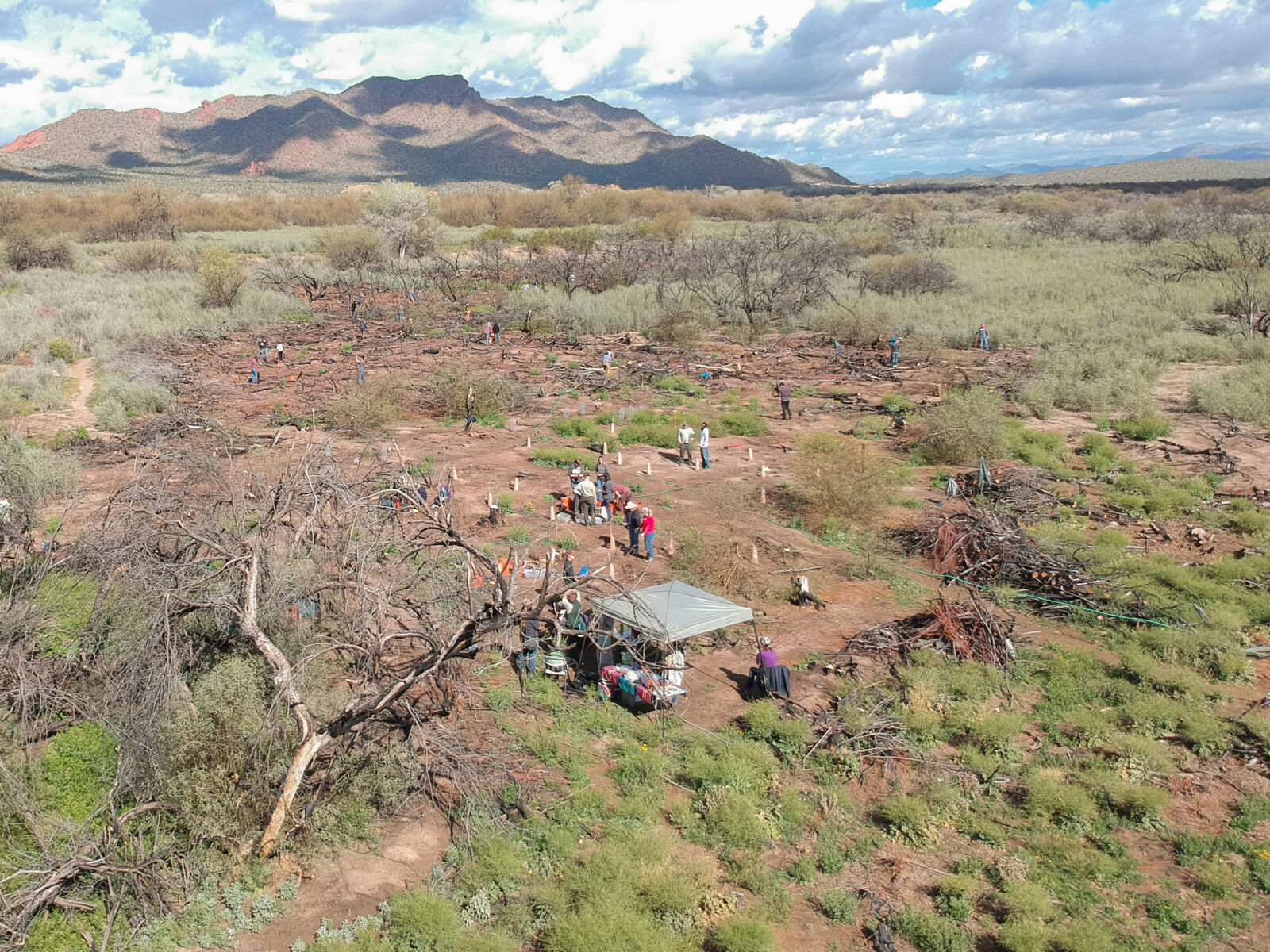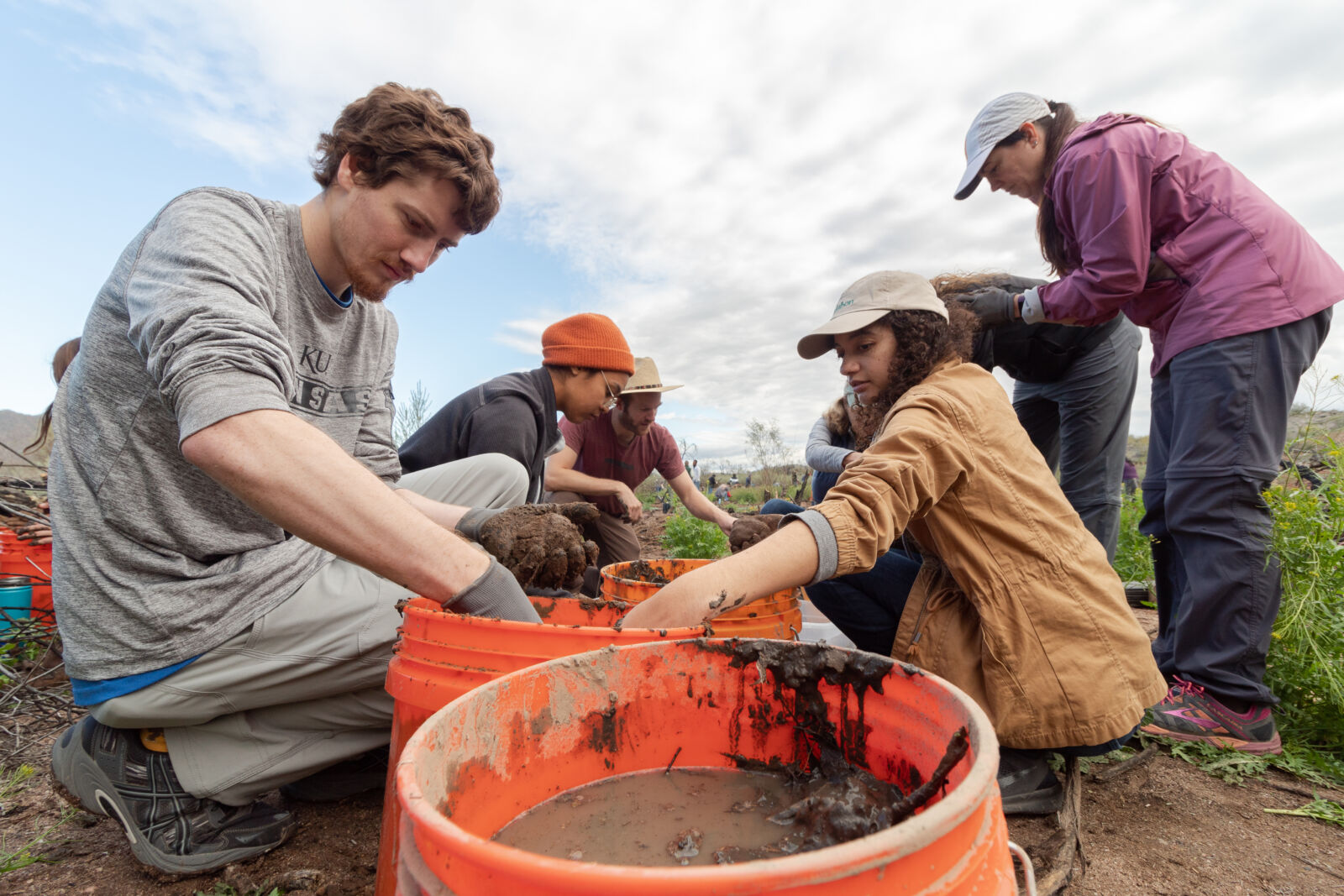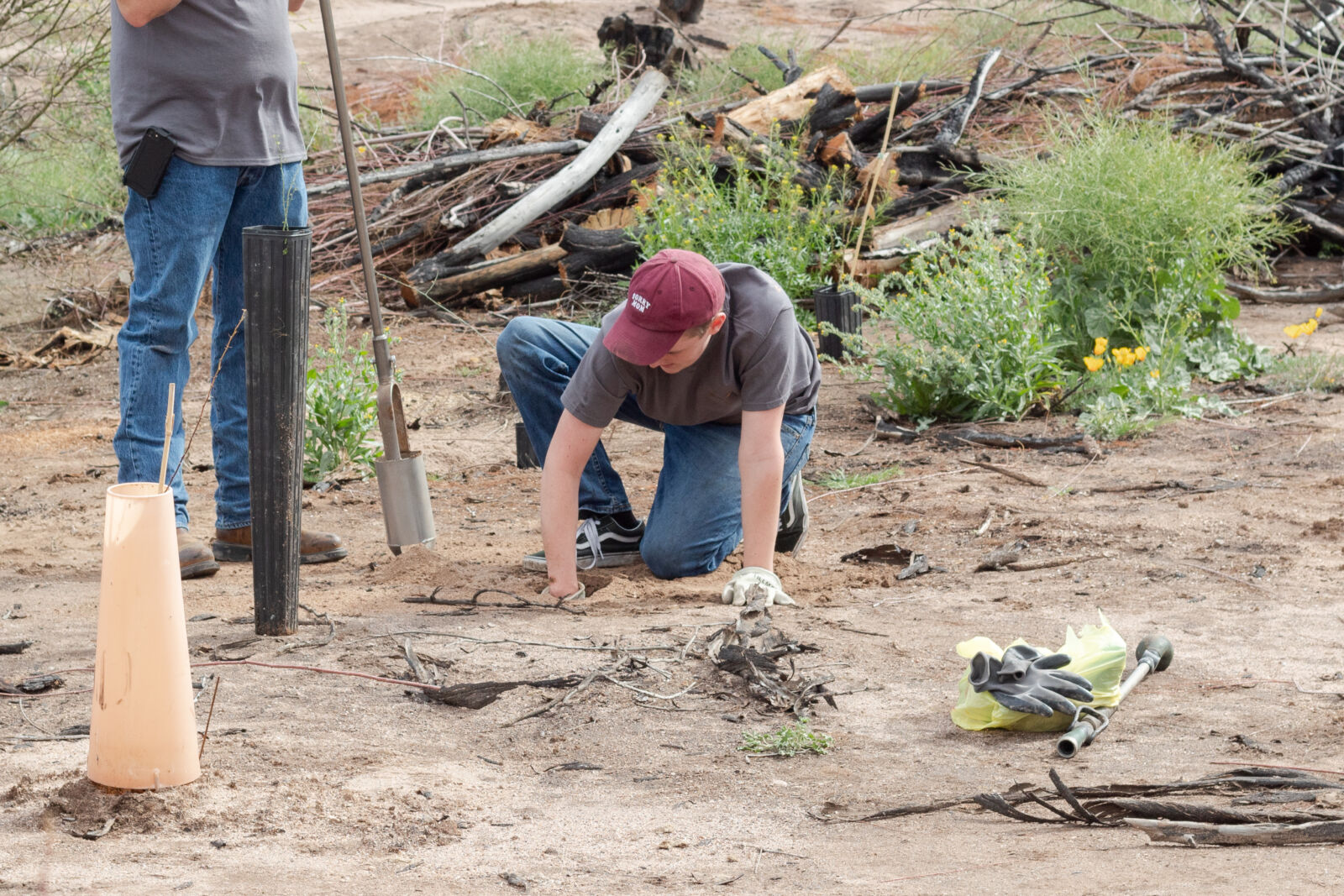The Salt River is a crucial source of water, life and beauty for Arizona, acting as a major artery throughout the watershed and for city water supplies in the Valley of the Sun. The Salt River not only provides a clean, renewable water supply, but also vibrant and lush wildlife habitat and many recreation opportunities for anglers, boaters, birders, and so many others. Yet the function and health of the Salt River has degraded over the last several decades, impacted largely by nonnative plant species, which outcompete and use more water resources than native vegetation.
With a shared vision of restoration, improved water quality and quantity, and enhanced recreational opportunities, the National Forest Foundation and a team of partners are stepping up on the Lower Salt River to make real, measurable change to benefit the river, birds and wildlife, for people from near and far, and for the state’s tourism economy. The cities of Scottsdale and Phoenix are key partners in supporting this valuable work on the Lower Salt River, and as part of the a regional watershed investment program called the Northern Arizona Forest Fund. And it’s never been more important to protect special places, our National Forests, and the water supplies that sustain millions of people throughout northern and central Arizona.

Kevin Youngblood Photography
This project is mighty in scale and partnerships, and represents a great model for landscape-scale collaborative watershed protection, putting a spotlight on the need to continue protecting our precious water supplies. In 2018, we removed invasive plants from 120 acres of riparian habitat, largely within a burn scar from the Cactus Fire of 2017. Part of the restoration plan also included planting 150,000 native trees in the same footprint, and along the edge of the river. The NFF is coordinating the effort with the Tonto National Forest and working hand-in-hand with Northern Arizona University to oversee all the program elements. Department of Forestry crews manually removed dense thickets of salt cedar and giant reed, while native trees have been planted through volunteer and community events.
The overall impacts of this project have numerous benefits to the broader Phoenix community as well as the birds and wildlife that resides near the watershed. Volunteers, community members, and local high school students will immediately benefit by creating connections to their watershed through learning and direct action in restoration stewardship. These restoration activities will improve wildlife habitat and visitor accessibility to the main river channel. Reestablishment of native vegetation will also decrease erosion downstream by allowing water to spread across the floodplain during flood events rather than being channelized by dense vegetation. From a statewide and community perspective, the project supports long-term water supply certainty in the Salt River Valley!

Kevin Youngblood Photography
The NFF is dedicated to the implementation of this project as part of the Northern Arizona Forest Fund, a larger regional program that supports restoration of watershed health across National Forests in the Salt and Verde Watersheds. The Lower Salt River Riparian Restoration Project is an important project in the overall approach to reduce risk of fire, flood, sedimentation, and erosion within the watersheds.

Kevin Youngblood Photography
About Scottsdale Water
Scottsdale Water – the city’s municipal water utility – has been providing quality drinking water and advanced reclamation services to Scottsdale businesses and residents for over 40 years. An industry leader, the utility has been recognized with the Association of Metropolitan Water Agencies’ Sustainable Water Utility Management Award – the highest industry recognition conferred to municipal water agencies – and as a Utility of the Future Today by the Environmental Protection Agency and its partners.
About Phoenix Water
The city of Phoenix Water Services Department is more than 100 years old and treats and distributes tap water to 1.7 million customers daily. Phoenix Water manages the city's sewer system, and handles wastewater treatment operations for 2.5 million residents in five Valley cities. Infrastructure includes 7,000 miles of water lines, 5,000 miles of sewer lines, eight treatment plants, 50,000 fire hydrants and 90,000 manholes. Phoenix's water and sewer rates are among the lowest of comparable-sized cities nationwide. Our tap water supply is in very good shape due to decades of planning and multiple water sources. The city reuses nearly all of its wastewater on crops, wetlands and energy production.

